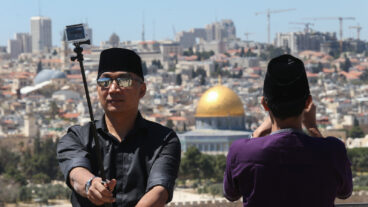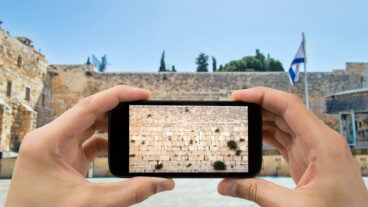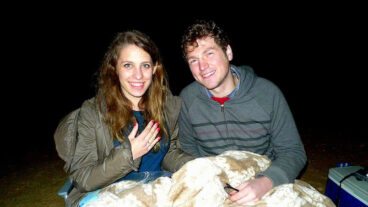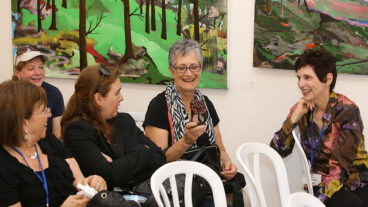Selections follow ratification of UNESCO convention.Two Thousand and Two has been named the International Year of Culture by the United Nations. It also marks a turning point in cultural recognition for the State of Israel.
Israel ratified the UNESCO Convention for the Protection of World Cultural and Natural Heritage on Jan. 6, 2000, joining 159 countries that signed this convention over prior decades. Israel’s National Commission for UNESCO is housed within the Ministry of Education and led by Daniel Bar-Elli. An optimist by nature, Bar-Elli is a creative problem solver who approaches even daunting hurdles as temporary barriers. The government thus wisely established the public committee responsible for evaluating Israel’s proposed World Heritage site nominations under the auspices of the National Commission.
Architect Michael Turner is chairing the committee. Turner volunteered his time and expertise to achieve the seemingly impossible in an improbable span of time. Turner is a renowned expert and advisor to the United Nations on the preservation and restoration of cultural heritage sites worldwide. In less than one year from Israel’s signing the UNESCO Convention, he succeeded against all odds in achieving official world heritage site status for Israel’s first two candidates: Massada and the Old City of Acre. Both were officially declared World Heritage Sites in December 2001.
The committee solicits comments and the involvement of professionals and academics, generates public interest, prepares the tentative list for presentation, and establishes an educational framework for protecting the natural and physical heritage of the region.
Israel’s World Heritage declaration states that, “The wealth of culture and the origins of histories in the region is a meeting place of west and east, north and south. It must be the collective responsibility of the communities of the region to generate the consensus so needed in ensuring that this heritage, cultural and natural, will be preserved and enjoyed by the world community. Israel is at a crossroads of universal cultures in time and place, as reflected in her world heritage sites. It is the cradle of world religions and living traditions of ideas and beliefs, among them Judaism, Christianity, Islam, Druze and Bahai. These cultural sites are associated with important historic events of religions, which represent the ongoing interchange of human values and cultural conditions.”
Site candidates will include sites located geographically in Israel, multinational sites with boundaries in Israel, but shared with neighboring countries, and sites in Israel that could be inscribed as part of the world collection and cultural routes. Future nominations will also involve historic ports, Nabatean trade routes and imported urban architecture.
Israel’s Interdisciplinary Center of Herliya (IDC), a leading private university, has launched a major public effort in support of Israel’s World Heritage Committee. The Lauder School of Government/Institute for Policy and Strategy recently announced the Sea of Galilee World Heritage Site Initiative, a global campaign for the preservation of the Sea and its surrounding heritage, including religious antiquities, archaeological treasures and natural landscapes. This international endeavor will forge a global leadership on behalf of the Sea, the Galilee and its unique ecosystem.
The Sea of Galilee (Kinneret), the nation’s most significant reservoir, is so low today that it
hardly requires a miracle to walk upon the waters. The Galilee, itself, is a vital but threatened periphery of the country. Foreign tourism – a mainstay of the Galilee economy – suffered an acute drop over the past two years and regional businesses are facing a dire future.
Israel’s World Heritage Committee identified the Sea of Galilee and Dead Sea, ancient Jewish, Christian and Moslem sites, and the Journeys of Jesus in its long list of tentative and proposed nominations. Both the Sea of Galilee and the Dead Sea are integral components of the five-million-year-old Great Syrian-African Rift Valley. The Rift Valley extends over 4,000 miles from the mountains of Turkey, through Syria, Lebanon (the Beka’a Valley), Israel (the Jordan Valley in the north and the Dead Sea and Arava Valley in the south), the Red Sea, and into Africa as far as Tanzania.
Decisive Israeli steps to preserve the ecosystem at the upper reaches of this Valley will no doubt have positive consequence for many nations that share this common world heritage.
There are over 700 World Heritage Sites worldwide, and it is firmly documented that sites and countries accorded such prestigious recognition experience almost a 40 percent rise in tourism over a two-year period. Indeed, UNESCO is the most effective global vehicle for promoting tourism to heritage sites and to the countries responsible for their preservation. Nations compete intensely for this stature. Moreover, given the fact that leading Arab nations hold official positions on the World Heritage Review Committee, Israel’s achievement in this sphere is all the more remarkable.
The international advisory body to UNESCO on cultural heritage, (the International Council of Monuments and Sites, known as ICOMOS), is comprised of the world’s leading non-governmental organizations (NGOS). Therefore, by signing the Convention and receiving World Heritage recognition, Israel has made positive cultural inroads into the United Nations, to related international bodies and to the NGO community, all of which until now have been so sorely lacking.












